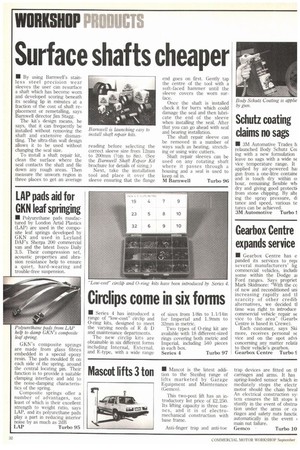Surface shafts cheaper
Page 124

If you've noticed an error in this article please click here to report it so we can fix it.
• By using Barnwell's stainless steel precision wear sleeves the user can resurface a shaft which has become worn and developed scoring beneath its sealing lip in minutes at a fraction of the cost of shaft replacement or remetalling, says Barnwell director Jim Stagg.
The kit's design means, he says, that it can frequently be installed without removing the shaft and extensive dismantling. The ultra-thin wall design allows it to be used without changing the seal size.
To install a shaft repair kit, clean the surface where the seal contacts the shaft and file down any rough areas. Then measure the unworn region in three places to get an average
reading before selecting the correct sleeve size from 12mm to 200mm (1/2in to 8in). (See the Barnwell Shaft Repair Kit brochure for details of sizing.)
Next, take the installation tool and place it over the sleeve ensuring that the flange end goes on first. Gently tap the centre of the tool with a soft-faced hammer until the sleeve covers the worn surface.
Once the shaft is installed check it for burrs which could damage the seal and then lubricate the end of the sleeve when installing the seal. After that you can go ahead with seal and bearing installation.
The shaft repair sleeve can be removed in a number of ways such as heating, stretching or using wire cutters.
Shaft repair sleeves can be used on any rotating shaft where it passes through a housing and a seal is used to keep oil in.
































































































































